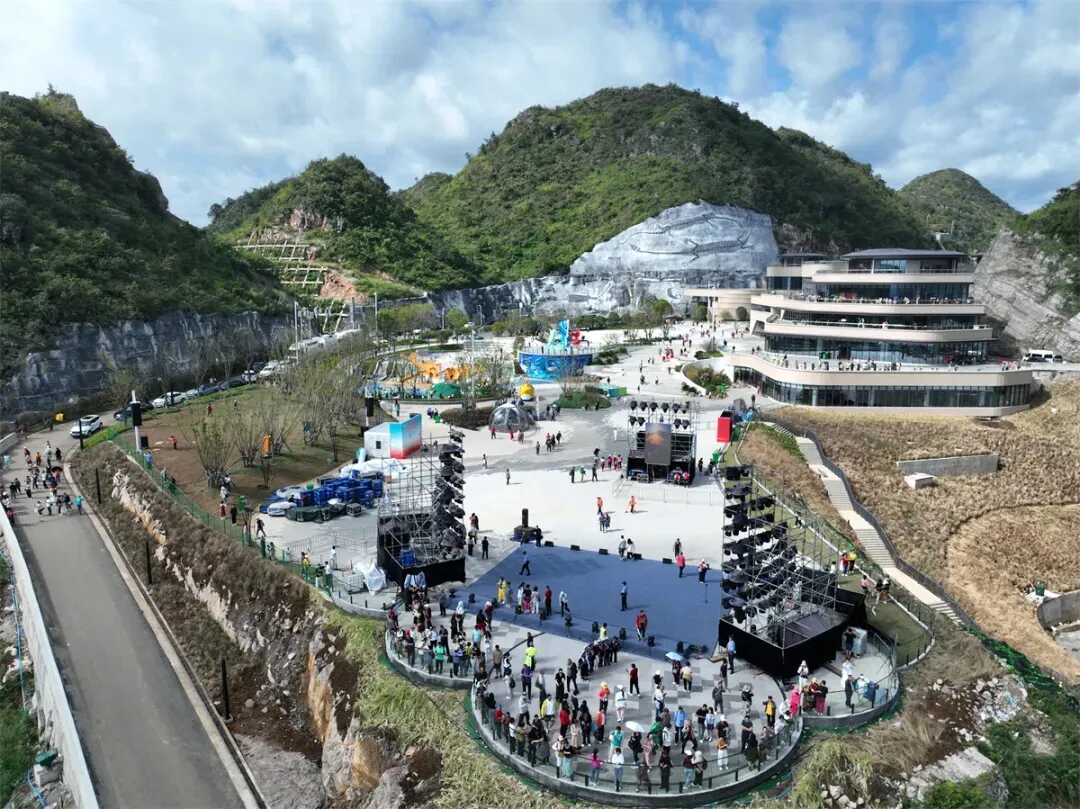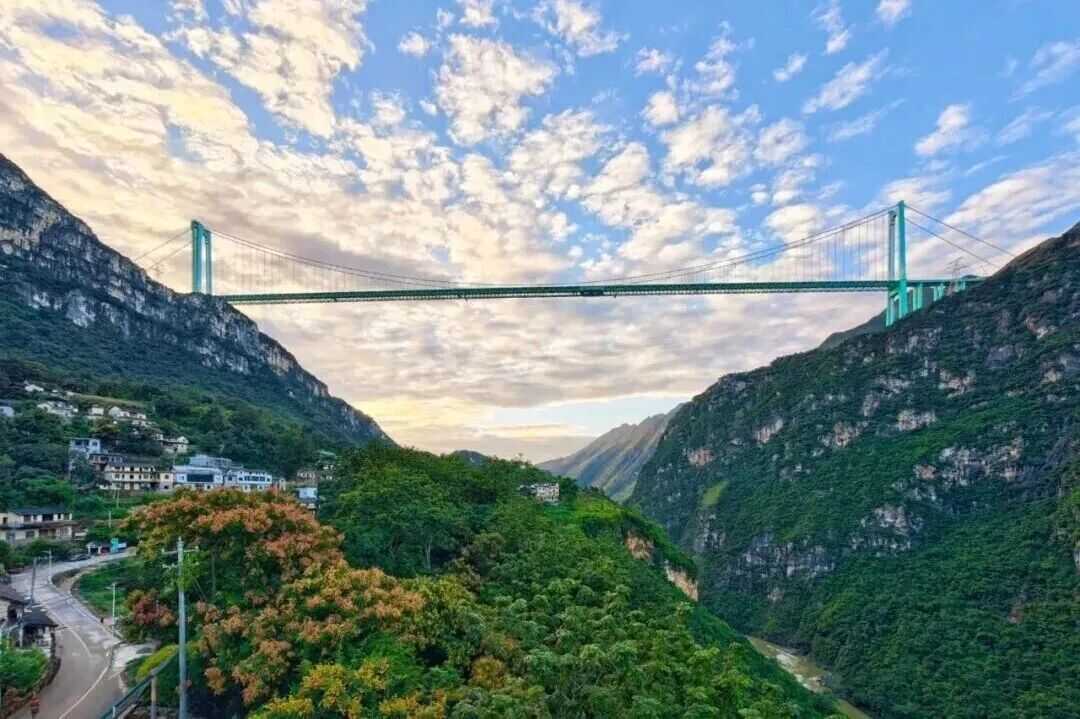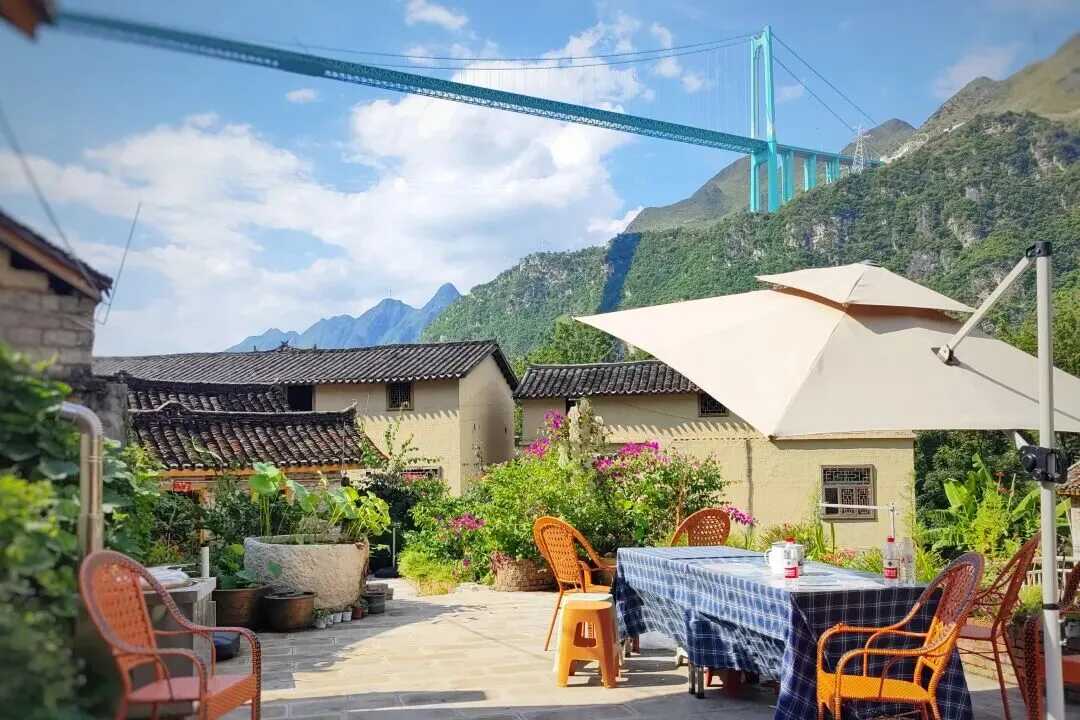- Profile Jurisdictions GOV DEPARTMENTS Cultures Travelling Educate
-
Zhenfeng County is located in the southwestern part of Guizhou Province, covering an area of 1,511 square kilometers. It administers 3 townships, 9 towns, and 5 subdistricts, comprising 166 villages (residential communities). The county has a total population of 430,000, with residents belonging to 25 ethnic groups including Han, Miao, Hui, Buyi, and Gelao. Ethnic minorities account for 49% of the total population. It is designated as a national key county for poverty alleviation and development and is part of the Revolutionary Old Base Areas of the Left and Right Jiang Rivers. In 2016, it became Guizhou's first pilot zone for ethnic cultural tourism-driven poverty alleviation. On March 3, 2020, the Guizhou Provincial People's Government announced its approval for Zhenfeng County to be removed from the list of impoverished counties.

Zhenfeng enjoys distinct geographical advantages, located 254 kilometers from the provincial capital Guiyang, 112 kilometers from the prefectural seat Xingyi, 488 kilometers from Kunming in Yunnan, and 340 kilometers from Nanning in Guangxi. Major transportation routes within the county include the Huixing Expressway, Guanxing Highway, and national/provincial highways such as G354, S210, and S309.
With a rich historical and cultural heritage, Zhenfeng was part of the Yelang region during the Qin Dynasty, belonged to the Zangke and Tongting commanderies in the Han Dynasty, was under Mingzhou in the Tang Dynasty, and was administered as Yongfeng Prefecture in the early Qing Dynasty. It gained its present name “Zhenfeng” (meaning “Loyal and Abundant”) after Emperor Jiaqing of the Qing Dynasty bestowed the inscription “忠贞丰茂” upon it. Zhenfeng County was established in 1913 and has remained so ever since. Historical sites and cultural relics are abundant throughout the county. The Hongyan Rock Paintings conceal unsolved mysteries of ancient human civilization. The Shaba Site showcases the craftsmanship of Zhenfeng's ancestors during the Spring and Autumn and Warring States periods. Mysterious tombs from the Qin, Han, and Three Kingdoms eras beckon exploration. The Huajiang Iron Chain Bridge bears the ancient hoofprints of the Yunnan-Guizhou Tea-Horse Road, while the Baicheng Ancient Ferry bears witness to past prosperity. Constructed during the Ming-Qing transition, Zhenfeng Ancient City features densely clustered merchant guild halls, interconnected money houses and vaults, secluded temple pavilions, and the harmoniously paired Wenchang Palace and Wenbi Tower. The Mother Culture Museum's Nostalgia Hall narrates historical transformations. In the late Qing dynasty, Hanlin scholar Wu Jiarui founded the “Renxue Society” at Wenchang Palace to propagate reformist ideas, " pioneering innovation and setting the trend in Panjiang." This initiative nurtured the core members of the Guizhou Autonomous Society. As a revolutionary base area, Zhenfeng witnessed the activities of the Red Seventh Army and Red Eighth Army. During the Long March, the Central Military Commission Column and the First, Third, and Fifth Corps of the Chinese Workers' and Peasants' Red Army crossed the treacherous Beipan River, traversed Zhenfeng, and spread the flame of revolution.

With its stunning natural landscapes, Zhenfeng shines as a dazzling gem along China's western tourism route—a natural paradise where travelers “return home with horses' hooves still fragrant from flowers.” The Twin Peaks, hailed worldwide as a “geological masterpiece and wonder of the world,” have gained international acclaim; The emerald waters and crimson maples of Sancha River invite visitors to appreciate the ink-wash painting where “the lake is a painting, and the painting is a bay of lake.” The vast and majestic Longtou Mountain beckons with its allure. The North Panjiang Grand Canyon, with its myriad forms, boasts the same breathtaking beauty and awe-inspiring grandeur as the Three Gorges of the Yangtze River, showcasing nature's extraordinary craftsmanship. Exquisitely charming Zhenfeng County boasts multiple national accolades: “China's Top 100 Summer Resort Counties,” National “Self-Driving Sports Campground,” China's Sports and Leisure Characteristic Town, and the Sancha River International Camping Base. Visitors from near and far are captivated by its romance, marvel at its wonders, and linger endlessly.
Blessed with abundant natural resources, this fertile land holds over 20 mineral deposits including gold, coal, magnesium, and fluorite. Its vast gold reserves have earned it the title “China's Gold County.” The industrious and resourceful people cultivated resilient Sichuan pepper in the once-barren Dingtan Stone Corner, enriching the region and pioneering the “Dingtan Model” for combating rock desertification in Southwest China. This achievement earned Zhenfeng the title of “China's Hometown of Sichuan Pepper.” The hit CCTV TV series “Survival in the Wilderness” vividly portrays Zhenfeng's people in their decisive battle against poverty and their journey toward a moderately prosperous society. Here lies the “Hometown of Glutinous Rice in China.” Strolling through Zhenfeng offers endless delights: amidst green mountains and clear waters, along streets and alleys, one savors “peach and plum blossoms in spring, spicy peppers in summer, sand ginger and chestnuts in autumn, and crimson maples and golden ginger in winter—with five-color rice every month and fragrant rice dumplings in every season.”

With its distinctive ethnic culture, Zhenfeng has been home to generations of Bouyei, Miao, and other ethnic minorities. Traditional festivals like “February Second,” “March Third,” and “June Sixth” showcase vibrant ethnic traditions and colorful folk customs. On the national intangible cultural heritage list, Zhenfeng's “Twelve Melodies of the Buyi Bronze Drum,” “Buyi Leyou,” and “Buyi Costumes” shine brightly. “Ancient Papermaking” and “Ancient Pottery Making” further showcase the historical legacy and enchanting charm of ethnic crafts.
With an exquisite living environment, Zhenfeng lies at the transition zone between the Yungui Plateau and the low mountains and hills of Guangxi. Its climate is mild, with no scorching summers, with abundant rainfall. The annual average temperature is 16.6°C, annual precipitation averages 1,376.9 mm, and the average elevation is 972 meters. With a frost-free period of 333 days and a forest coverage rate of 48%, it features a typical karst landscape and subtropical monsoon humid climate. Dubbed the “Karst Park County,” it is an ideal place for human habitation.
contact details
Tel:00-86-0859-6617305
Address:No. 69, Fumin Road, Yongfeng Community, Yongfeng Street, Zhenfeng County, Qianxinan County, Guizhou Province, China
Working hours:Weekdays: 8:30 a.m. to 12:00 p.m.; 14:30 p.m. to 18:00 p.m.
